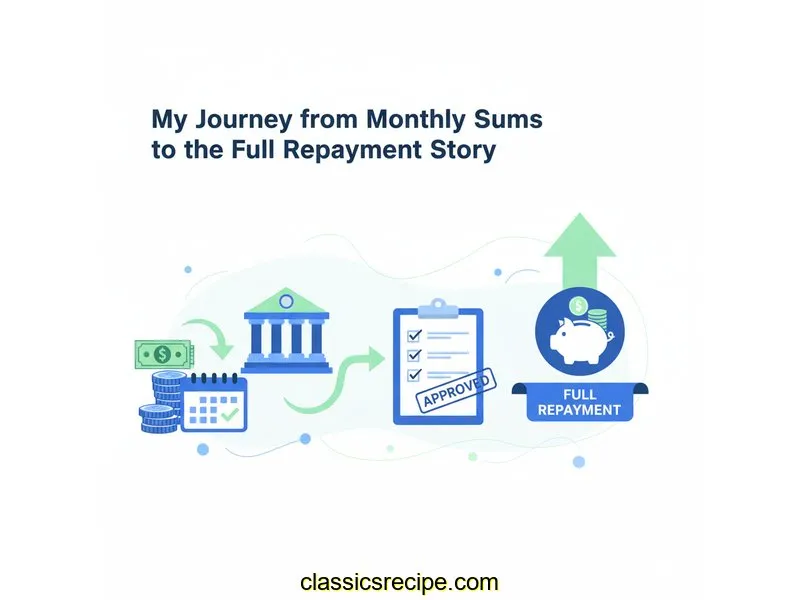
Auto Loan Calculator
Calculate payments over the life of your Loan
Home Blog Privacy Terms About Contact
Calculate payments over the life of your Loan
Home Blog Privacy Terms About ContactPublished on October 15, 2025

It all started with a casual conversation over lunch with a coworker. They mentioned getting a loan for a used car, and when they told me their monthly payment amount, I was genuinely surprised. It was about a hundred dollars less than a hypothetical quote I had run for myself just a week prior, for a very similar loan amount. My immediate thought was, "Wow, they must have gotten a fantastic interest rate!"
But that simple thought quickly unraveled into a series of questions. How could the numbers be so far apart? Was their credit that much better, or did they find a lender I hadn't considered? This wasn't about wanting the same loan; it was about a fundamental gap in my own understanding. The numbers didn't make sense, and I felt a strong pull to figure out why.
My initial attempts were clumsy. I went to a few online loan tools and started plugging in the numbers I knew. I entered the principal, an estimated interest rate, and a monthly payment to see what would happen. But I was just moving sliders and typing in boxes without really grasping the relationship between them. The tools were spitting out answers, but I didn't understand the language they were speaking. The results felt like magic, not math.
That's what this journey is about. It's my personal quest to look behind the curtain of these financial tools and understand the mechanics that make them work. I wanted to move from being a passive user to an informed one. Please remember, this is about understanding how calculations work, not financial advice. It's simply me sharing what I learned while trying to answer a question that wouldn't leave my head.
To solve my puzzle, I decided to set up a controlled experiment using an online loan tool. I needed to isolate the variables to see what was causing the huge swing in the monthly payment my coworker mentioned. My hypothesis was that it had to be the loan term—the number of months they had to repay it. I decided to run the exact same loan scenario through two different term lengths.
Here were the numbers I used for my simulation:
Then, I ran two separate scenarios.
Scenario A: A 48-Month Term (4 years)
I typed in the numbers, set the term to 48 months, and the tool instantly gave me the results. The monthly sum came out to be $441.74. Okay, that seemed reasonable and was close to the hypothetical quote I had seen before.
Scenario B: A 72-Month Term (6 years)
Next, I kept every single number the same—$18,350 principal and 7.2% interest—but I extended the term to 72 months. The result was a monthly sum of $314.47. This was it! This was the kind of difference I had heard about. It was over $127 lower per month. My initial reaction was pure relief. "Aha! A longer term makes things so much more manageable," I thought.
But then my eyes drifted to another box on the results page, a box I had previously ignored: "Total Interest Paid." My satisfaction vanished and was replaced by profound confusion. For the 48-month term, the total interest was $2,853.52. For the 72-month term, it was an astonishing $4,291.84. I had to double-check. By choosing the "more manageable" monthly option, I would be paying an extra $1,438.32 just for the privilege of borrowing the same amount of money.
This was the moment of friction. The numbers were telling me two completely opposite stories. One number screamed "affordability" while the other whispered "a much higher price." I felt stuck. It was clear I was missing a fundamental piece of the puzzle connecting the monthly sum, the loan's span, and the total interest paid.
I refused to let the confusion win. I spent hours tinkering with the tool, reading definitions, and sketching out how the numbers might be interacting. It wasn't about finding a "better" loan; it was about understanding the mathematical narrative. The breakthrough came not from a complicated formula, but from a simple realization: interest is charged on the remaining balance over time. More time means more opportunities for interest to accumulate.
A longer loan term doesn't just spread the principal out over more months; it also keeps a higher balance for a longer period. Each of those extra 24 months in my Scenario B was another month where interest was being calculated on what I still owed. Even though the monthly payment was smaller, a larger portion of those early payments was going toward interest, not chipping away at the principal. This slow start on principal reduction is what gives interest such a long runway to grow.
To solidify this new understanding, I created a table to contrast my old, flawed thinking with what I was learning. It helped me organize my thoughts and see the connections I had previously missed.
My core lesson was that time is a fundamental ingredient in the interest recipe. The formula for a loan payment is designed so that you pay off all interest accrued during the loan's life plus the original principal. By extending the life of the loan, you are inherently agreeing to more periods of interest accrual. It's that simple and that profound.
To see this in action, I looked at the amortization schedules for both scenarios. For the 72-month loan, the first payment of $314.47 included $110.10 of interest and only $204.37 towards the principal. In contrast, the first payment of $441.74 on the 48-month loan still had $110.10 of interest, but put a much larger $331.64 toward the principal. This faster reduction in principal is what saves so much in interest over the life of the shorter loan.
The final confirmation was doing the simple multiplication myself. For Scenario A, it was $441.74 x 48 months = $21,203.52. For Scenario B, it was $314.47 x 72 months = $22,641.84. Seeing the final payout numbers, calculated from the monthly sums I initially focused on, made the relationship between all the variables crystal clear.
To be absolutely sure my new understanding was correct, I ran a completely different simulation. I imagined a smaller loan of $11,500 at a 6.5% interest rate. First, over 36 months, which resulted in a ~$350 monthly payment and ~$1,095 in total interest. Then, over 60 months, which gave a ~$223 monthly payment but ~$1,885 in total interest. The pattern held. The lower monthly number came at the price of nearly $800 more in interest.
This whole experience reshaped how I approach financial numbers. It wasn't about finding a "good" or "bad" loan, but about learning to read the complete story the numbers are telling. My perspective shifted from just seeing isolated figures to understanding an interconnected system. Here are the key lessons I've taken away about the calculations themselves.
The best way I found is to use an online loan tool that displays both figures simultaneously. Enter your loan amount and interest rate, then toggle the loan term (e.g., from 48 to 60 to 72 months). Watch how the monthly sum goes down while the total interest paid goes up. It's a direct visual representation of the trade-off.
From what I've learned, they are both critically important parts of the same mathematical equation. A high interest rate will increase the overall expense, and so will a very long term. They work together. A low rate on a very long loan could potentially result in more interest paid than a slightly higher rate on a very short loan. They are intertwined, and you have to consider both.
Interest is calculated each month on the remaining balance. At the beginning of a loan, the balance is at its highest, so the interest portion of your payment is also at its highest. A longer term stretches this out, so for many more months, you're paying on a very large balance, meaning more of your fixed payment is "consumed" by interest in those early stages.
My advice is to treat it like a lab. Don't just look for one answer. Input a base scenario, then change only one variable at a time. First, adjust the term. Then, reset it and adjust the interest rate. Then, reset it and adjust the loan amount. This isolates each component and shows you exactly how it influences the monthly sum and the total interest.

The biggest lesson from this whole experience wasn't about numbers, but about perspective. I started by asking which number was "better," but I ended up learning that they just tell different parts of the same story. One tells you about the immediate impact on your monthly budget, while the other reveals the long-term narrative of the total price. To be informed, you have to be willing to listen to both.
My journey started with a simple question about a coworker's loan, but it ended with a much greater confidence in my ability to understand the mechanics of these financial tools. I'd encourage anyone who feels intimidated by these numbers to simply start playing with them. You don't need to be a math genius. You just need curiosity and a willingness to ask "why."
This article is about understanding calculations and using tools. For financial decisions, always consult a qualified financial professional. My goal was simply to share the "aha" moment that made the numbers finally click for me.
Disclaimer: This article documents my personal journey learning about loan calculations and how to use financial calculators. This is educational content about understanding math and using tools—not financial advice. Actual loan terms, rates, and costs vary based on individual circumstances, creditworthiness, and lender policies. Calculator results are estimates for educational purposes. Always verify calculations with your lender and consult a qualified financial advisor before making any financial decisions.
